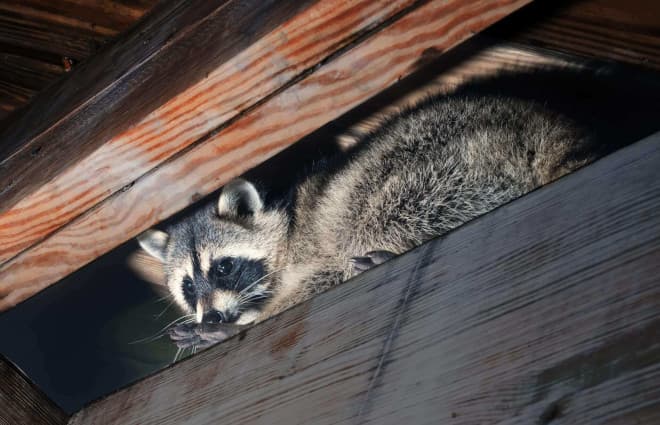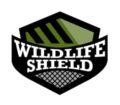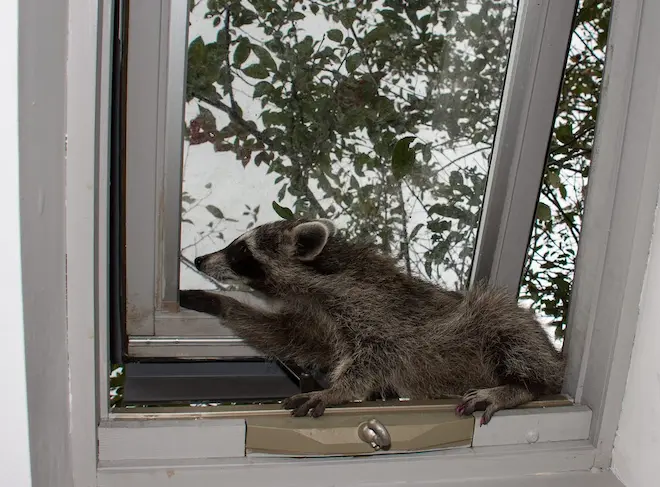There’s little doubt that raccoons are intelligent creatures. So if you suspect you have a raccoon in the attic, you may not be far from the truth.
Raccoons are so smart that they even passed an intelligence test that researchers gave them in 2017. In this test, raccoons were presented with a cylinder containing floating marshmallows just out of their reach. They were able to figure out that dropping stones to get the cylinders would net them the marshmallows, proving that their small brains are quite capable, indeed.
So how do you tell if there is a raccoon in your attic? In this article, you’ll learn about the signs of a raccoon in your attic and the best solution to take care of them or you can always call our raccoon removal services in Toronto.

What Are the Signs of a Raccoon In the Attic?
When fall starts, the days start to get shorter— and fewer sunshine hours means the night comes faster. This means raccoons start to become more active in Ontario.
And raccoons love attics— they are dry, safe, and warm. Plus, they offer great protection from the weather. So what signs should you look for?
External Damage
One of the most apparent things you can find is external damage from raccoons. You can find signs of damage from damaged shingles and wooden woofs, as well as soffits and vents. Anywhere that can leave an open hole for raccoons is fair game, but roofs are a particular favorite for sneaky raccoons to enter into.
And since raccoons are excellent climbers, they can easily climb trees and other surfaces to access your roof. If you have a chimney, raccoons can also climb into them and gain access to your home.
Apart from the external damage, you can also see the damage inside your attic.
Attic Damage
Another sign you can tell if you have a raccoon in the attic is by checking if you have damage inside your attic. Raccoons rarely leave an attic undisturbed.
Because of this, you can find damage in places such as in the drywall and insulation. Raccoons who want to build a nest or comfy area to sleep in will often use insulation to make their homes.
They also pose a fire risk if they chew through electrical wires in your attic. They can also tear holes in HVAC systems and tear apart heating and cooling ducts.
One of the most apparent signs of a raccoon infestation is that they will urinate and defecate all over the floor of your attic, causing damage to the wood and insulation. You may also be able to find spots on the ceiling if the feces is left to rot.
Raccoon Noises
Raccoons are noisy creatures, and it’s likely you’ll hear them at night. And to identify a raccoon, you’ll have to listen for some key noises.
If you hear thumping, it’s a large animal— you can rule out mice and squirrels at this point. If you hear scratching, it can be hard to determine because all creatures that break into your attic can cause a scratching noise.
Vocal noises are also common with raccoons, and you’ll be able to hear them making all sorts of noises such as various growls, chirps, cries, and other noises. If you are unfortunate enough to have baby raccoons, you may hear their whining as well.
The Best Solution for Raccoon Removal
If you have raccoons in your attic, the best solution is to call a raccoon removal company in your area. Raccoons can cause major damage, so it’s important to remove them properly.

